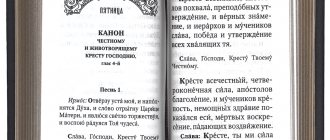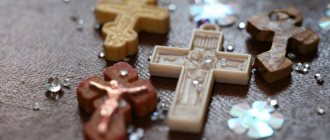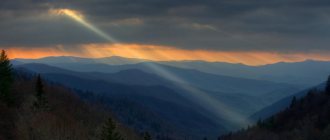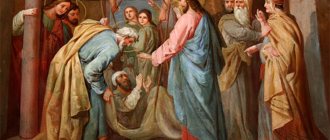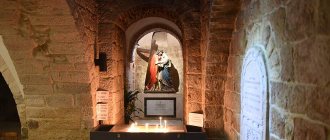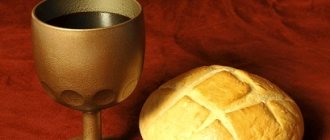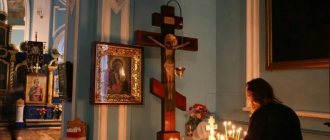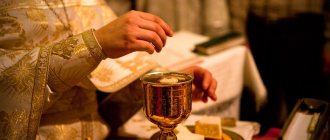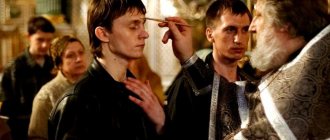In the mid-15th century, two special religious movements emerged in the Russian Orthodox Church. These two directions were different from each other. One of them was called Josephiteness, and the other was non-covetousness.
The ideologist of Josephiteism was Joseph Volotsky, who defended a conservative attitude towards all movements in the church. But the leader of the non-covetous people became Nil Sorsky. Our article is about how these directions developed.
Non-covetousness
this is one of the main spiritual and moral foundations of Holy Rus'
The essence of this direction was the predominance of spiritual and moral motives of life behavior over material interests.
As we know, in the souls of all our ancestors, and above all ordinary peasants, there was always a sense of justice, and not just material retribution. Even then, people believed that they needed to live with dignity and remunerate according to their conscience.
Around the 19th century, an ideal of justice was created, which became a kind of compass for Russian people. He talked about the fact that there is no need to chase wealth and profit. It was these goals in life that were considered unworthy.
The most important thing was that you need to live your life kindly, in truth and with dignity.
A person should never strive for wealth or hoarding; he should always be content with what he has. The Russian people also came up with various proverbs and sayings, for example, extra money means extra worries.
Non-covetousness is an evangelical virtue, as well as one of the monastic vows upon tonsure
In Orthodoxy we often hear such a word as “non-covetousness.” What it is? Non-covetousness is an evangelical virtue, which is expressed in a person’s independence from the passion for hoarding, as well as excessive attachment to material goods. It is the subject of one of the three monastic vows that is considered to be non-covetousness. Let's consider what the holy fathers said about what non-covetousness is and how to acquire it.
The Monk Isaac the Syrian said that no one can acquire true non-covetousness if he cannot endure all temptations with great joy in his soul:
“...no one can acquire real non-covetousness unless he prepares to endure temptations with joy. Without non-acquisitiveness, the soul cannot free itself from the rebellion of thoughts and, without bringing the feelings into silence, it will not feel peace in thought.”
Isaac Sirina
Reverend
[/aside]
Saint Ignatius Brianchaninov said that in order to acquire love for spiritual and heavenly objects, one must completely renounce love for earthly objects:
“...He who distributed his property to the poor in order to show complete obedience to the Savior... who himself became a beggar in order to subject himself to the hardships associated with poverty and abundantly bringing humility, by this action destroys all his hope in the world, concentrating it in God.
In order to acquire love for spiritual and heavenly objects, one must renounce love for earthly objects. Non-acquisitiveness and renunciation of the world are a necessary condition for achieving perfection. The mind and heart must be completely directed towards God, all obstacles, all reasons for entertainment must be eliminated...”
Ignatiy Brianchaninov
saint
[/aside]
Monks who come to serve in the monastery take a vow of non-covetousness
Monks who come to serve in the monastery and give their lives to God take a vow of non-covetousness. This is what is given at tonsure. A monk who trusts in the Kingdom of Heaven denies all earthly riches down to the very minimum property, because the guarantee of his safe existence is not in the abundance of supplies, but in Christ. It is in this that the monk finds real wealth.
Non-covetousness is not only moral commandments, but it is a condition for perfection, which every person should strive for. It is then that he will become a citizen of the Kingdom of Heaven.
The leader of the non-possessors was Nil Sorsky
As we see from history, non-covetous people are usually called the spiritual and political movement of the Russian Church at the end of the 15th and first half of the 16th century. This term was introduced by Russian liberal Slavophiles in the 2nd half of the 19th century for the Trans-Volga monasteries.
The term was first used by canon law historian Alexei Pavlov. That’s what he called Vassian Patrikeev. All this gradually began to be reflected in the interpretation of the worldview of northern monasticism.
Who is the leader of the non-covetous? It is also customary to explain the position of non-possessors solely by religious and moral beliefs. Also, another unjustified trend was the convergence of the views of his teacher, the Venerable Nile of Sora. Nil Sorsky was considered the ideological inspirer of the non-covetous people; this was their spiritual leader. And Prince Vassian was his student and faithful follower.
It was the views of Nil Sorsky on all issues that were sharply contrasted with the views of Joseph Volotsky.
Nil Sorsky was considered the ideological inspirer of the non-covetous people; this was their spiritual leader. Photo: kirillov-monastyr.ru
It is also worth paying attention to the fact that the problem of the monastic economy did not burden the brethren and monks with their worries. From ancient times, Byzantine monasteries were provided with land grants, which were intended to support the monasticism of the empire. A great increase in monastic land ownership was observed during the era of the Macedonian dynasty.
In the 16th century we see that active distribution of land to monasteries began. Athonite monasteries enjoyed special privileges. Of course, this brought a number of other problems. For example, the fact that in the process of reorienting the church, the problems of worldly life began to be solved. Which was opposed to the original spiritual task of saving the human soul. Soon monasteries began to spread in the East.
Archbishop Eustathius of Thessalonica opposed this. He demanded that monastic land ownership be limited, since they cause great harm, especially for those who decided to accept the monastic image. He said that small monasteries should not have taken land at all. Monasteries must obey their diocesan rulers. Monasteries that were not subordinate to secular voters, where the monks themselves had to deal with affairs and issues that they should not have touched.
The revival of monasticism became associated with the name of St. Gregory of Sinaite. It was he who raised the question of the goals of monastic life.
The revival of monasticism began with the name of the great saint - St. Gregory of Sinaite. This saint raised the question of the goals of monastic life. Photo: simvol-veri.ru
Ideas of non-covetousness and its ideologists. Neil Sorsky
Reverend Nilus of Sorsky is the main ideologist of non-covetousness. Little information about his life has reached our time. It is known that he spent several years on the holy Mount Athos, studying the life of the holy fathers. With his heart and mind, he transformed this knowledge into practical guidance for his life. Later he founded a monastery, but not an ordinary one, but following the example of the Athonite monasteries. Companions of Nil Sorsky lived in separate cells. Their teacher was an example of hard work and non-covetousness. This meant instructing the monks in prayers and spiritual asceticism, for the main feat of the monks is the struggle with their thoughts and passions. After the death of the saint, his relics were glorified by many miracles.
After the death of Nil Sorsky, Vassian Kosoy became a follower of the non-covetous people.
Let us also pay attention to another spiritual leader of non-possessors - this is Vassian Kosoy. He became a representative of the non-covetous party after the death of Nil Sorsky. Vassian was a prince by birth and belonged to the most noble boyar families. After he left for Moscow, he entered the service of Grand Duke Vasily the First. With the help of the grand ducal power, he was able to reach many heights.
The successor of the leaders of the non-covetous people after the death of Nil Sorsky was Vassian Kosoy. Vassian was a prince by birth and belonged to the most noble boyar families. Photo: studfiles.net
Vassian decided to give his life to God behind the monastery wall. It was there that his new life began. At first, the monastery charter did not suit his character. There he met Neil, and with him he escaped to the monastery. It was then that he became a zealous supporter of non-covetous people, although at first he did not share this worldview.
Vassian learned a lot from the Nile, and also adopted a lot from him. If we pay attention to history, we see that the monk Vassian was one of the most interesting figures in Russian history of the 16th century. He was a rather peculiar person who combined himself and his activities with arrogance and passion.
At the time of the death of Nil Sorsky, Vassian had a fairly good understanding of the situation. He did not speak out about his participation in the activities of the council. It was he who helped place Metropolitan Varlaam in a certain role. This decree was made without a council of bishops by order of the Grand Duke, to whom Vassian Kosoy, in turn, turned. It was he who advised to nominate Metropolitan Varlaam to the metropolitan see. Metropolitan Varlaam sympathized with the non-covetous people and became the abbot of the Simonov Monastery, where Vassian then lived. To support him in his business, he sent to him another of the people who then lived on Athos - Maxim the Greek.
Venerable Vassian
In the spring of 1409, a noble prisoner, Prince Vasily Ivanovich Patrikeev, was brought to the Kirillov Monastery. His father, Ivan Yuryevich, was not only the head of the boyar duma, a relative of the prince, but also his first assistant. Vasily himself also already managed to show himself as a talented governor and diplomat. He participated in the war with Lithuania, and then in the negotiations that made it possible to conclude a profitable peace.
However, at one point the prince’s attitude towards Vasily Patrikeev and his father changed. Both were accused of treason. They were saved from death execution by the intercession of the Moscow Metropolitan - right in shackles, they were both forcibly tonsured into monks. The father was taken to the Trinity Monastery, where he soon died. Vasily was imprisoned in the Kirillo-Belozersk monastery. It was here that the newly minted monk met Nilus of Sorsky and became a zealous follower of his teachings of non-covetousness. This became the determining factor for the rest of Vasily Patrikeev’s life.
Maxim the Greek most fully developed the state-legal aspects of non-covetousness
Maxim the Greek came to Moscow quite by accident, but even then he was a remarkable and major figure in the history of the Russian church. Information about him is very fragmentary and unreliable. It was Maxim Grek who most fully developed the state-legal aspects of non-covetousness.
Maxim Grek most fully developed the state-legal aspects of non-covetousness. Photo: prepodobnii.org
He became the successor after Vassian the Oblique. He tried to support both his laws, which had already been introduced, and began to introduce something of his own. He called on the king to organize the kingdom entrusted to him according to Christ’s commandments and laws, and he also called on everyone to create justice and righteousness in the middle of the earth. It is also worth saying that he connected the structure of government, in which the tsar had to rule together with the metropolitan and listen to his advice. He had to take care of his subjects in a spirit of humanity and tenderness. Royal power had to be limited by both divine and positive law, as well as moral norms. He tried to ensure that the secular and spiritual authorities lived in close union, since they had one goal in front of them.
By leaving a comment, you accept the user agreement
Reverend Maxim the Greek
On February 3, the Russian Orthodox Church commemorates St. Maxim the Greek. Mikhail Trivolis (that was his name in the world) was born in Greece, spent his childhood on the island of Corfu, and in the year of the discovery of America he left for Italy. Here he entered a Catholic monastery as a monk. But realizing that Catholic learning provides only an external, albeit useful, school, he soon returns to his homeland and becomes an Orthodox monk on Holy Mount Athos. In distant Muscovy, Vasily III is trying to understand the Greek books and manuscripts of his mother. Vasily turns to the Patriarch of Constantinople with a request to send an intelligent translator. The choice falls on Maxim. He travels thousands of miles to cold Russia, not even suspecting how difficult his life will be there.
In Moscow, Maxim Grek also translates the Interpretation of the Psalms and the book Acts of the Apostles. But the Slavic language is not a native language for the translator, and annoying inaccuracies creep into the books, which the spiritual authorities will soon find out about. The church court imputes these inaccuracies to the translator as damage to books and sends him to imprisonment in the tower of the Volokolamsk Monastery. The persecution will last for more than a quarter of a century, but it is loneliness and imprisonment that will make Maxim the Greek a great writer. Only at the end of his life was the monk allowed to live freely and the church ban on him was lifted. He was about 70 years old.
